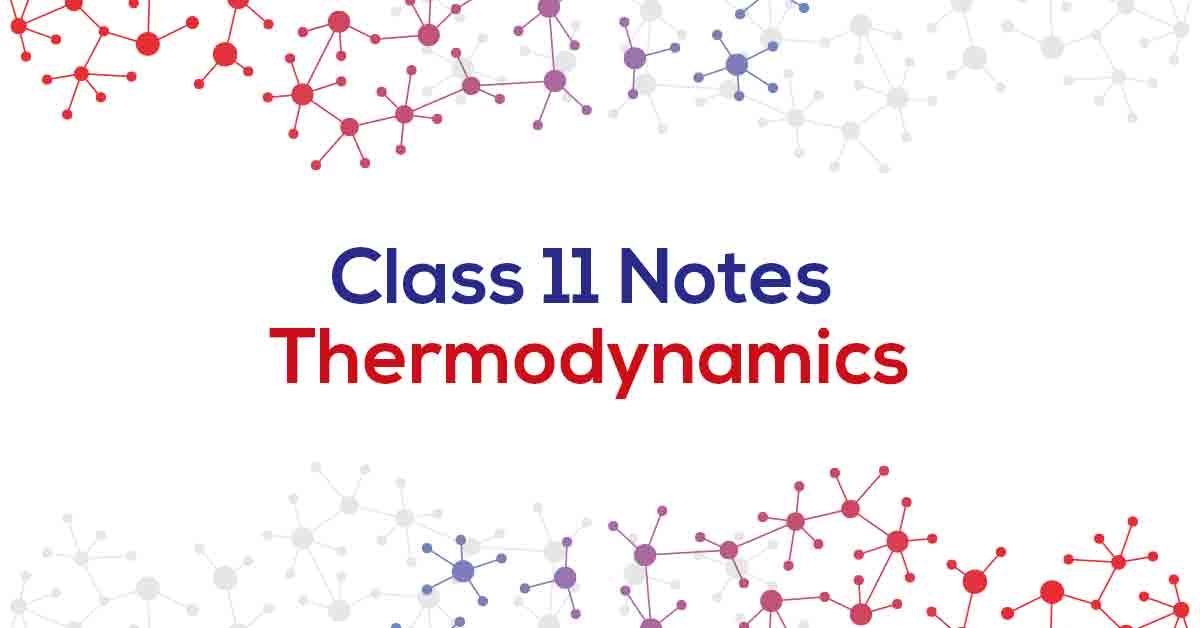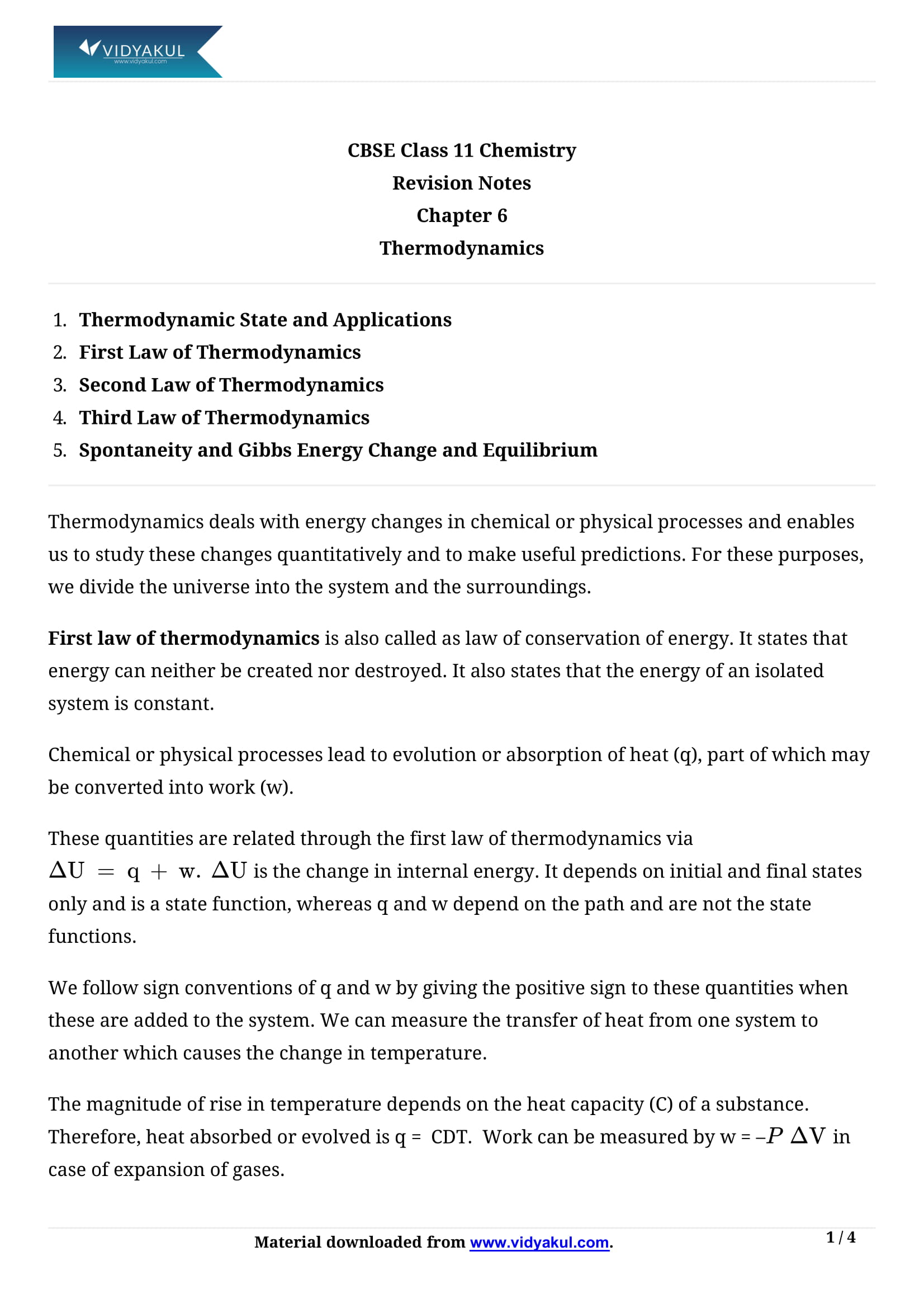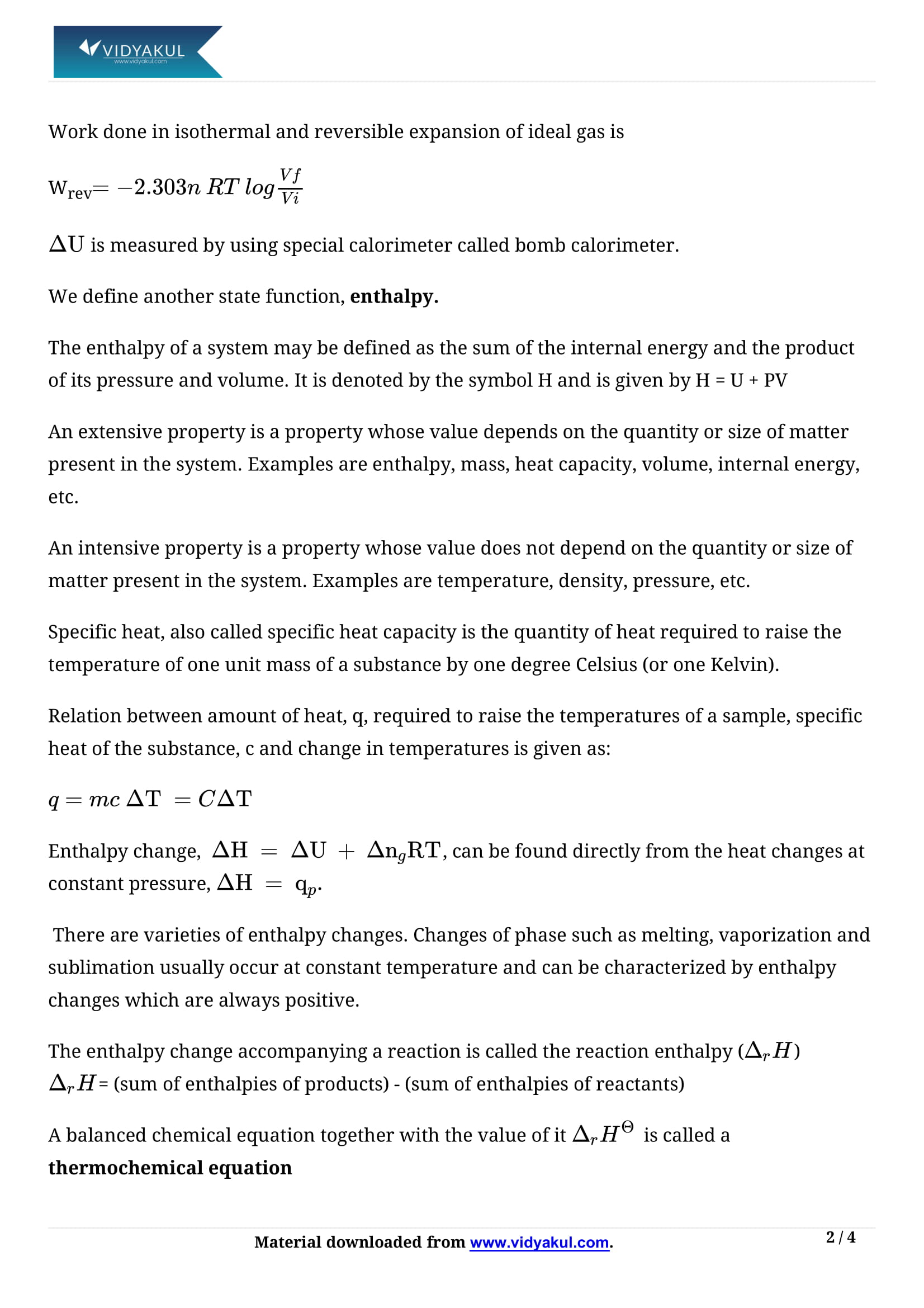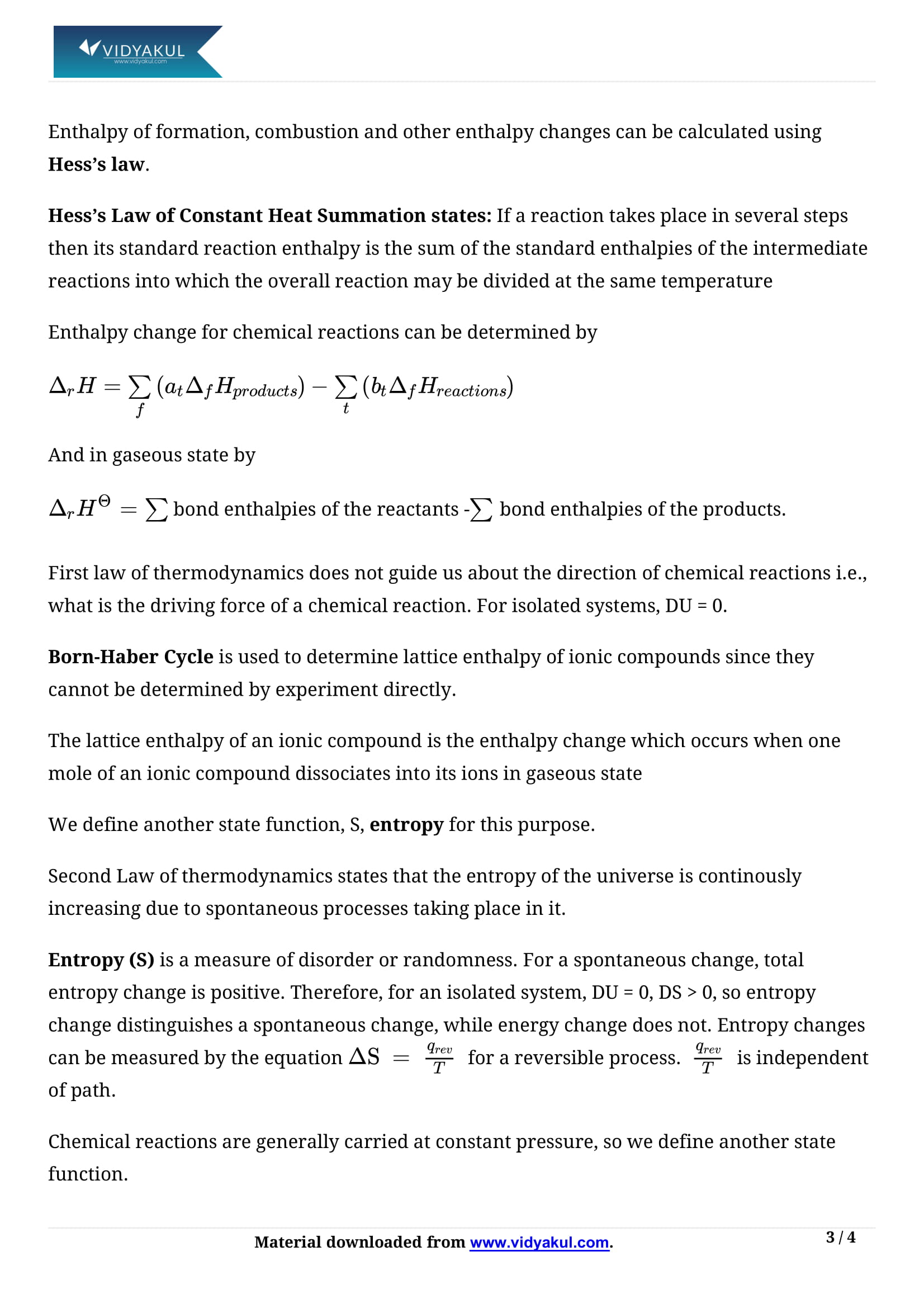Thermodynamics Class 11 Notes

Chapter 6 Thermodynamics
Thermodynamics is a very important chapter and students need a thorough understanding of both theory and applications. You will also have to do practice problems to test your conceptual knowledge. To help with this, we provide detailed NCERT notes for 11th graders. The CBSE NCERT notes for Chemistry Chapter 6 to Grade 11 presented here are prepared by Vidyakul's top teachers and academic experts.
The NCERT Grade 11 Chemistry notes presented here are simple yet challenging to help students understand the concepts and methods of problem solving. You can also use suggested notes to review concepts or practice practice questions for upcoming exams. Read the article and download the NCERT notes for Class 11 Chemistry Chapter 6 PDF.
CBSE 11th CHEMISTRY CH-6
Points to Remember
Heat evolved or absorbed is expressed as q = C∆T.
In case of expansion of gas, work is measured as w = –pex∆V
Enthalpy change is defined as the change in energy of a system at constant pressure. It is denoted as ΔH. Enthalpy is a state function. Enthalpy change, ∆H = ∆U + ∆ngRT, can be calculated directly from the change in heat at constant pressure, ∆H = qp
Hess’s law states that the standard reaction enthalpy for overall reaction taking place in several steps will be equal to the sum of standard enthalpies of intermediate reaction steps by assuming that each step occurs at the same temperature.
Topics and Sub-Topics
We have provided the NCERT notes for Class 11 Chemistry Chapter 6 and a direct link to the NCERT notes. Download free PDF to help the students prepare well for the exam. Finding the right books and notes usually turns into a gruelling task with a plethora of links available on the Internet. If you have also been struggling with the same issue, look no further. The NCERT notes for Class 11 Chemistry Chapter 6 PDF can easily be downloaded from the Vidyakul who are looking for authentic textbooks to download.
Before getting into the details of NCERTnotes for Class 11 Chemistry Chapter 6, let’s have an overview of the constituent topics included in this chapter.
Frequently Asked Questions
How to score high grades in Class 11 CBSE Chemsitry?
Studying from the first day and preparing continuously can help us score well in any subject. CBSE Class 11 Chemistry notes can be referred to for revision.
What is the importance of the topic Thermodynamics?
Thermodynamics is the subject which helps in the relation of work, heat, temperature and energy. Studying this topic properly will help students gain overall knowledge.
How many laws of Thermodynamics are there in total?
There are four laws of thermodynamics.
Practice Questions
Given: Aluminium quantity 60.0 g, a temperature increases from 35°C to 55°C, molar heat capacity 24 J mol–1 K–1 Calculate the number of kJ of heat.
Given: Equilibrium constant of a reaction is 10, T = 300 K, R = 8.314 JK–1mol–1 Calculate the value of ∆G0?
∆U = 0 for an isolated system, calculate ∆S
Heat evolved or absorbed is expressed as q = C∆T.
In case of expansion of gas, work is measured as w = –pex∆V
Enthalpy change is defined as the change in energy of a system at constant pressure. It is denoted as ΔH. Enthalpy is a state function. Enthalpy change, ∆H = ∆U + ∆ngRT, can be calculated directly from the change in heat at constant pressure, ∆H = qp
Hess’s law states that the standard reaction enthalpy for overall reaction taking place in several steps will be equal to the sum of standard enthalpies of intermediate reaction steps by assuming that each step occurs at the same temperature.
How to score high grades in Class 11 CBSE Chemsitry?
What is the importance of the topic Thermodynamics?
How many laws of Thermodynamics are there in total?
Given: Aluminium quantity 60.0 g, a temperature increases from 35°C to 55°C, molar heat capacity 24 J mol–1 K–1 Calculate the number of kJ of heat.
Given: Equilibrium constant of a reaction is 10, T = 300 K, R = 8.314 JK–1mol–1 Calculate the value of ∆G0?
∆U = 0 for an isolated system, calculate ∆S
Learn about various Thermodynamics in Thermodynamics Class 11 Notes pdf.
Download this solution for FREE Download this PDF







